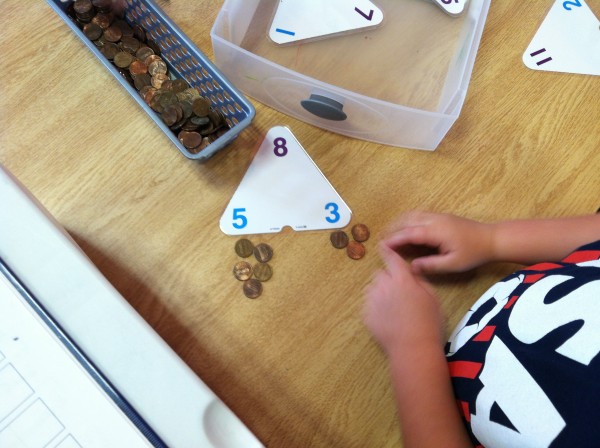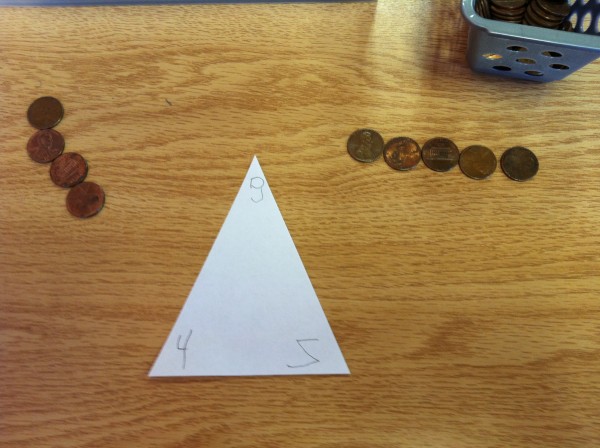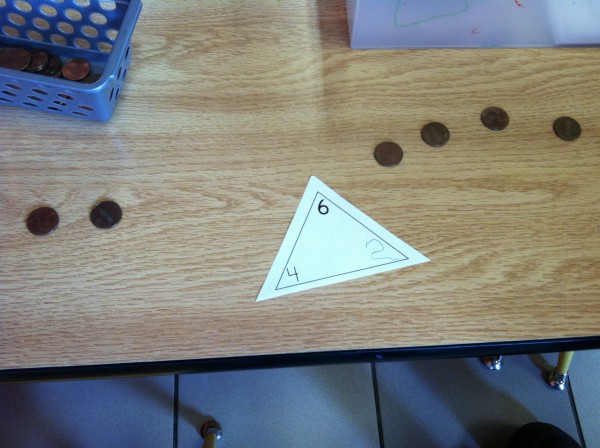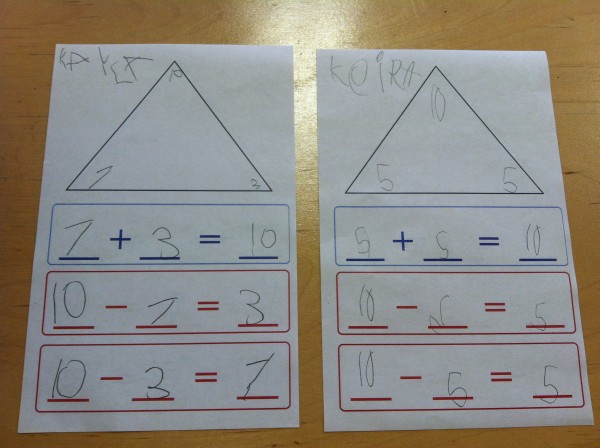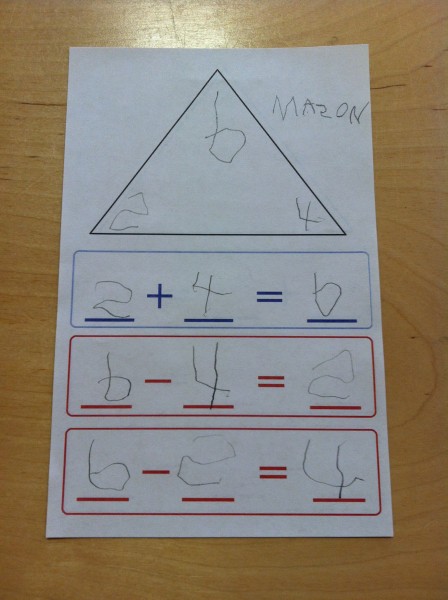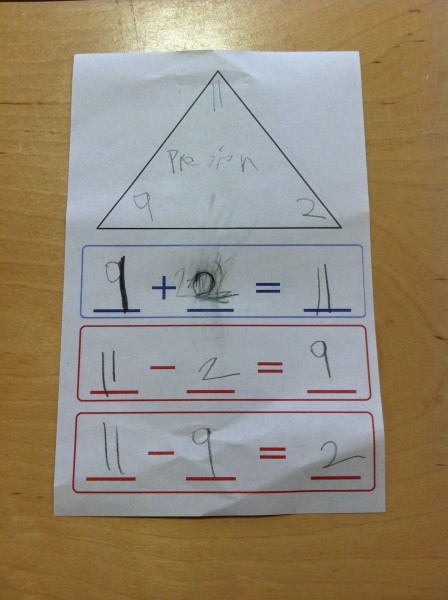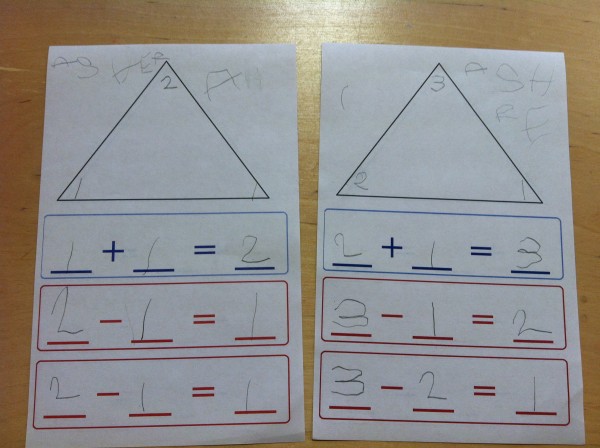Each year, by summer, my students are pretty comfortable with addition and subtraction. They can solve both types of problems using various methods, and they can apply the concepts in many contexts. This year’s group was particularly prepared for a challenge. So I decided to spend some time teaching the interrelatedness of addition and subtraction. I chose to scaffold the idea using simple equilateral triangles, as many other teachers have done.
We began by checking to make sure that some completed triangle cards were correct. (I used these triangle flash cards, but I have since made my own, which you can access at the bottom of this post.) We looked at the number on top, pulled out that many coins, and then split the coins into two groups according to the numbers on the two bottom corners. That was a breeze. Everyone was able to do it with surprisingly little support.
The following week, we started making some of our own triangles. We pulled out some number of coins, wrote that number on top corner, divided those coins into two smaller groups, and then wrote those numbers on the bottom corners. This activity went smoothly, too. Some children became confused, but after one or two reminders, they were able to complete it independently.
The week after that, I put out some triangles with a number missing on one of the bottom corners. Now, students counted out the number on top, then separated the number provided on one of the bottom corners, thereby revealing what would need to be in the other corner. This was a little trickier, but most students found it manageable.
Finally, we incorporated written addition and subtraction problems. We used coins to help us fill in the blank triangles on top of the page, as we had done previously. Then, looking the numbers in the triangle and/or the coins on the table, we filled in the blanks in addition and subtraction problems.
We did each type of activity as a group multiple times before trying it in our centers. As I explained the concepts, I carefully arranged the coins and I used many hand gestures. Here are examples of some of the language and gestures I used:
I’m going to get out 6 coins, so I’ll write a 6 on top. Now I’m going to break it apart. I’m putting 4 over here, which means I have how many on this side?… I am going to write 4 and 2 in the bottom corners. I can make a plus problem with these numbers. I can take the 4 [holding my hands above the 4 coins], and get 2 more [hold my hands above the 2 coins]. How many do I have together [making circular movements over both groups]?… I can also make some minus problems with these numbers. If I start with all 6 [gesturing over all of them again], and I take away these 4 [covering up the 4 coins], then how many are left [pointing at the 2 coins]?… Or I can start with all 6 [gesturing over all of them once more], take away these 2 [covering up the 2], and I’m left with…
Occasionally, I repeated the same language while gesturing at the numbers in the triangle instead of the coins in front of us.
For most of my students, this final activity was difficult. They seemed overwhelmed by the many steps they had to follow. However, a handful of students were able to put all of the pieces together independently.
Heading into this lesson, I was well aware that we would be working with some pretty challenging ideas. In order to really grasp the interrelated nature of addition and subtraction, children need a somewhat abstract understanding of numbers and also a good early understanding of addition and subtraction. My students were pretty far along in both of those areas, so I decided to challenge them.
I often seek new ways to practice basic skills while simultaneously touching on more advanced concepts. It has become a pillar of my classroom approach. While only a few of my students could competently demonstrate that they understand the relationship between addition and subtraction, I believe the others have been well primed. And they all got some practice counting, breaking numbers apart, and putting numbers together.
Below are links to the (pdf) files I created for this lesson, which you are welcome to download and use in your classroom or with your children.
